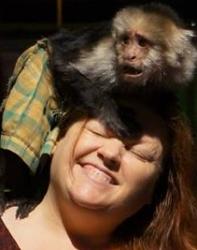 This Sunday, come celebrate the release of Domenic Priore’s brand-new, Revised Edition of “Riot on Sunset Strip: Rock ‘n’ Roll’s Last Stand in Hollywood.” The event will take place at Book Soup (8118 Sunset Boulevard), September 20th between 4 p.m. and 6 p.m. and will include a panel discussion, a Q&A and “…a new slide show of mid-’60s Sunset Strip music scene images [Domenic has] pulled together to kick off the festivities.”
This Sunday, come celebrate the release of Domenic Priore’s brand-new, Revised Edition of “Riot on Sunset Strip: Rock ‘n’ Roll’s Last Stand in Hollywood.” The event will take place at Book Soup (8118 Sunset Boulevard), September 20th between 4 p.m. and 6 p.m. and will include a panel discussion, a Q&A and “…a new slide show of mid-’60s Sunset Strip music scene images [Domenic has] pulled together to kick off the festivities.”
Domenic tells us he will be joined in a panel discussion and Q&A session by “the original lead guitarist from the band Love, Johnny Echols, lead singer of The Watts 103rd Street Rhythm Band Charles Wright, and a journalist who wrote for The Los Angeles Times’ WEST magazine in 1966, Tom Nolan, who covered the scene in his article “The Frenzied Frontier of Pop Music” that year.”
In honor of this auspicious event, we would like to re-post Bob Lee’s review of the original printing of “Riot on Sunset Strip: Rock ‘n’ Roll’s Last Stand in Hollywood,” originally posted on LAist Jun 24, 2008. Review after the break.
“Riot on Sunset Strip: Rock ‘n’ Roll’s last Stand in Hollywood” by Bob Lee
Beach Boys fans are well acquainted with author Domenic Priore, who performed the heroic feat of gathering every word ever written about the Beach Boys’ Smile, and publishing all of it, with minimal but insightful commentary, as “Look! Listen! Vibrate Smile!” in the mid-1990s. It was nothing if not thorough, kind of like a researcher’s entire file drawer dumped on your desk with notes attached to each artifact. His latest book shows he hasn’t lost his attention to detail, although he’s now doing all of the writing himself. “Riot On Sunset Strip: Rock ‘n’ roll’s Last Stand in Hollywood,” is a thoughtfully created, lovingly compiled history of the events taking place within a few square miles during the years 1965-66.
Just about every musician that hit town in those years gets a paragraph in here somewhere, and the big ones – Buffalo Springfield, Doors, Love, Zappa, Monkees – get multiple pages, as do LA pop art, the roots of local R&B and dance music, the multiple rock-related TV shows of the day, the exploitation film of the book’s title, and the riots themselves.
Photographically, there is an immediate contrast to the slightly more recent and more familiar images of 1967. Los Angeles sure doesn’t look very hippie yet in the many black-and-white photos that illustrate the book. Apart from the long-ish hair, most of them could work at the bank. Many of the bands look kind of like the Rolling Stones, who keep showing up, and Bill Wyman’s still wearing a tie.
Many of the book’s highlights are visual: Jan and Dean flying off the hood for their “Dead Man’s Curve” promo shot; Teri Garr and Toni Basil go-go dancing at the Action; Bobby Fuller surrounded by teenyboppers, one of whose boyfriends might have put him down. One photo catches a denim-clad, clean-shaven Neil Young hollering at a bar crowd at in 1966, one well-coiffed debutante stuffing her ears and looking put out, while other dudes look up with heavy expressions of disbelief.
It’s clear that Priore is approaching the subject at hand first and foremost as an admirer. As a result, the book is not heavy on “Hollywood Babylon” gossip. This is more like an evening spent with a record collector who knows every studio, every producer, every session musician on all the great records that came out of this town in those years, who also happens to be a great storyteller.
Printed in paperback, Riot on Sunset Strip is a comfortable read filled with glossy photographs, but not as unwieldy as a coffee table book. Big, attractive and always fun, this is prime reading for fans of 60s music of any stripe. The furthest-out boundary stretchers, the most primitive garage stompers, the most polished showbiz machines of all time, all of them ended up here, playing gigs in that tiny square of real estate. Seeing them in one place at one time is, indeed, a trip.



